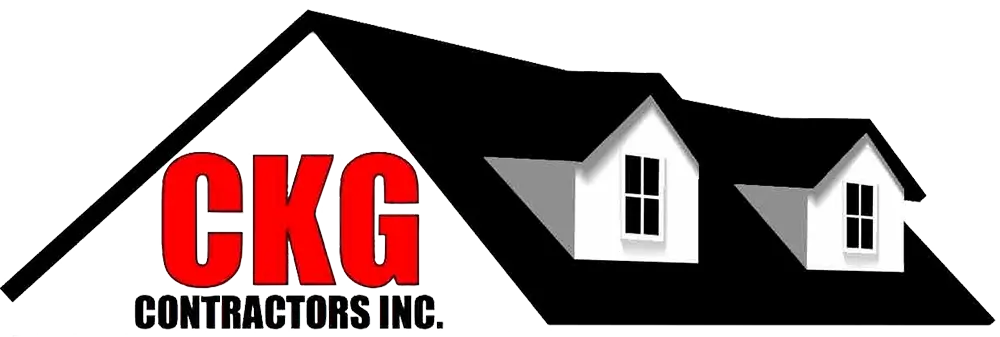
What to do When a Tree Falls on Your Roof. If you are lucky, a tree falling covered on your roof will be the only damage done. More often than not, however, this is not the case. A large tree crashing through your roof can cause extensive damage, from broken tiles and shingles to water damage and even structural damage. What should you do if this happens to you?
When you need to deal with a fallen tree, make sure that the damage it has caused won’t be too much for your home. The last thing anyone wants when they’re trying to recover from an unexpected natural disaster like this one is more expensive repairs and lost time away from work because there’s been some sort of injury too!
What to do When a Tree Falls on Your Roof
1. Evacuate Your Homestead
The first and most important step is to get your family out of harm’s way. If a tree has fallen on or near your house, it’s best to assume the worst and find another place to stay for the night. Once everyone is safe, you can begin to assess the damage done to your home.
Contact your family to find out if they are okay. If you have small children, it may be best for them and the others in the home until help comes their way; make sure everyone knows where all of this happened so someone can come to check on things soon!
If you have a pet, make sure they are evacuated as well.
Do not try to remove the tree yourself! This is a job for professionals. Not only is it physically dangerous, but if you make things worse, your insurance might not cover the cost of further damages.
Remember: Your safety comes first!
2. Develop a Fallen Tree Safety Plan
Now that you and your family are safe, it’s time to develop a plan for what to do if this happens again.
- Create a list of emergency numbers and post them in a central location. This should include the number for your insurance agent, as well as a local tree removal service.
- Make sure everyone in the family knows how to use the fire extinguisher and where it is kept.
- Teach children not to play near fallen trees or downed power lines.
- Inspect your property regularly for dead or dying trees that could pose a threat if they tree fell.
By taking these steps now, you can be prepared for anything that comes your way in the future!
3. Stay Calm and Assess the Damage
Once you’ve evacuated your home, it’s time to assess the damage. This can be a difficult and emotional task, but it’s important to stay calm and focused. First, take a look at the tree itself. If it’s a small tree or branches, you may be able to remove it yourself. But if the tree is large or there is significant damage, call a professional. This is not something you want to try and tackle on your own.
Once you’ve determined that the damage isn’t too severe, take some pictures of the damage for your insurance company. Then, call your insurance company and file a claim. They will send out an adjuster to assess the damage and determine how much they will cover.
Now it’s time to start making repairs. If you have minor damage, like missing shingles or broken tiles, you can probably do this yourself. But if there is significant damage, you’ll need to hire a professional roofer to make sure the repairs are done properly.
Once the repairs are made, take some time to inspect your roof regularly so that you can catch any problems early on. This will help prevent further damage and save you money in the long run.
4. Call 911
When in doubt, always err on the side of caution and call 911.
If the tree has caused major damage to your home, call 911. The police will come and assess the situation and make sure that it’s safe for you to be in your home. They will also help direct traffic if a tree is blocking a road.
If the tree has fallen on power lines, do not try to remove it yourself! This is a job for professionals. Wait until the power company arrives to shut off the power and remove the tree.
In some cases, the tree may need to be removed by a professional service. If this is the case, your insurance company should cover the repair costs of removal.
5. Call a Roofing Contractor Now!
If you have any damage to your roof, it’s important to call a roofing contractor as soon as possible. The sooner you make repairs, the less damage there will be.
A good roofing contractor will be able to assess the damage and give you an estimate for repairs. They will also be able to tell you if your insurance will cover the cost of repairs.
It’s important to find a reputable roofing contractor that you can trust. Ask friends or family for recommendations, or look for online reviews. Once you find a few contractors that you like, give them a call and set up an appointment for an estimate.
When you need a roofing contractor, we recommend doing research or contacting us and finding one that does good work. This way it will be easier for your home to stay dry or leak-free without any further issues arising from bad quality roofs!
Don’t wait too long to make repairs! The longer you wait, the more damage there will be.
6. Make Arrangements for a Place to Stay
If your home is not livable after a tree fall on it, you’ll need to make arrangements for a place to stay. If you have homeowners insurance, your policy may cover the cost of a hotel room. But if you don’t have insurance, or your policy doesn’t cover this type of damage, you’ll need to pay for a hotel room out of pocket.
If the tree has caused major damage to your home, it’s best to find another place to stay until the repairs can be made. If you have a relative or friend nearby, see if you can stay with them for a few days. If not, there are always hotels. The important thing is that you and your family are safe and sound.
7. Call Your Insurance Company
Once you’ve taken care of the immediate situation, it’s time to call your insurance company. If you have homeowners insurance, your policy should cover the cost of repairs. But if you don’t have insurance, or if your policy doesn’t cover this type of damage, you’ll need to pay for the repairs out of pocket.
When you call your insurance company, they will send an adjuster to assess the damage and determine how much they will cover. Once the adjuster has determined the extent of the damage, your insurance company will start making arrangements for the repairs to be made.
If you have any questions about what your insurance policy covers, now is the time to ask. The customer service representative should be able to help you understand your coverage and what it will pay for.
In some cases, the tree may need to be removed by a professional service. If this is the case, your insurance company should cover the cost of removal.
Once you’ve taken care of the immediate situation and called your insurance company, the next step is to start making repairs. But before you start repairing the damage, there are a few things you need to keep in mind.
First, if the damage is extensive, it’s best to wait for your insurance company to send an adjuster. The adjuster will assess the damage and determine how much your insurance company will pay for.
Second, if you have any questions about your insurance policy, now is the time to ask. The customer service representative should be able to help you understand your coverage and what it will pay for.
And third, if you need to remove a tree from your property, it’s best to hire a professional service. The cost of removal should be covered by your insurance policy.
FAQs:
What does homeowners insurance cover?
Homeowners insurance typically covers the cost of repairs if your home is damaged by a covered event, such as a storm or fire. But coverage varies from policy to policy, so it’s important to read your policy carefully and talk to your agent or insurer if you have any questions.
What if I don’t have homeowners insurance?
If you don’t have homeowners insurance and a tree falls on your house, you’ll need to pay for the repairs out of pocket. If the damage is extensive, it’s best to wait for your insurance company to send an adjuster. The adjuster will assess the damage and determine how much your insurance company will pay for. But if you don’t have insurance, or if your policy doesn’t cover this type of damage, you’ll need to pay for the repairs out of pocket.
What is the cost of roof repair?
The cost of roof repair varies depending on the extent of the damage. If you have homeowners insurance, your policy should cover the cost of repairs. But if you don’t have insurance, or if your policy doesn’t cover this type of damage, you’ll need to pay for the repairs out of pocket. The cost of removal should be covered by your insurance policy.
What are the signs that my roof needs to be replaced?
There are a few signs that indicate your roof needs to be replaced, such as leaks, missing shingles, and structural damage. If you notice any of these signs, it’s best to call a professional roofing contractor for an inspection.
What is the average lifespan of a roof?
The average lifespan of a roof is 20 to 30 years. However, the lifespan of your roof will depend on a number of factors, such as the type of roof, the materials used, and the climate. If you live in an area with severe weather conditions, your roof may not last as long as it would in a more moderate climate.
What are some tips for maintaining my roof?
There are a few things you can do to help extend the life of your roof and prevent future damage. First, make sure your gutters are clean and free of debris. Second, have your roof inspected by a professional every few years. And finally, if you live in an area with severe weather conditions, consider having your roof reinforced or replaced more often.
Conclusion:
Now that you know What to do When a Tree Falls on Your Roof, share this information with your friends and family so they’re prepared too! And if you ever need a roofing contractor, be sure to call us – we’re always happy to help! Visit our website or give us a call today for more information.
We hope this guide was helpful in What to do When a Tree Falls on Your Roof! If you have any questions or need assistance, please don’t hesitate to reach out. Our experts are here to help 24/seven! Thank you for reading




